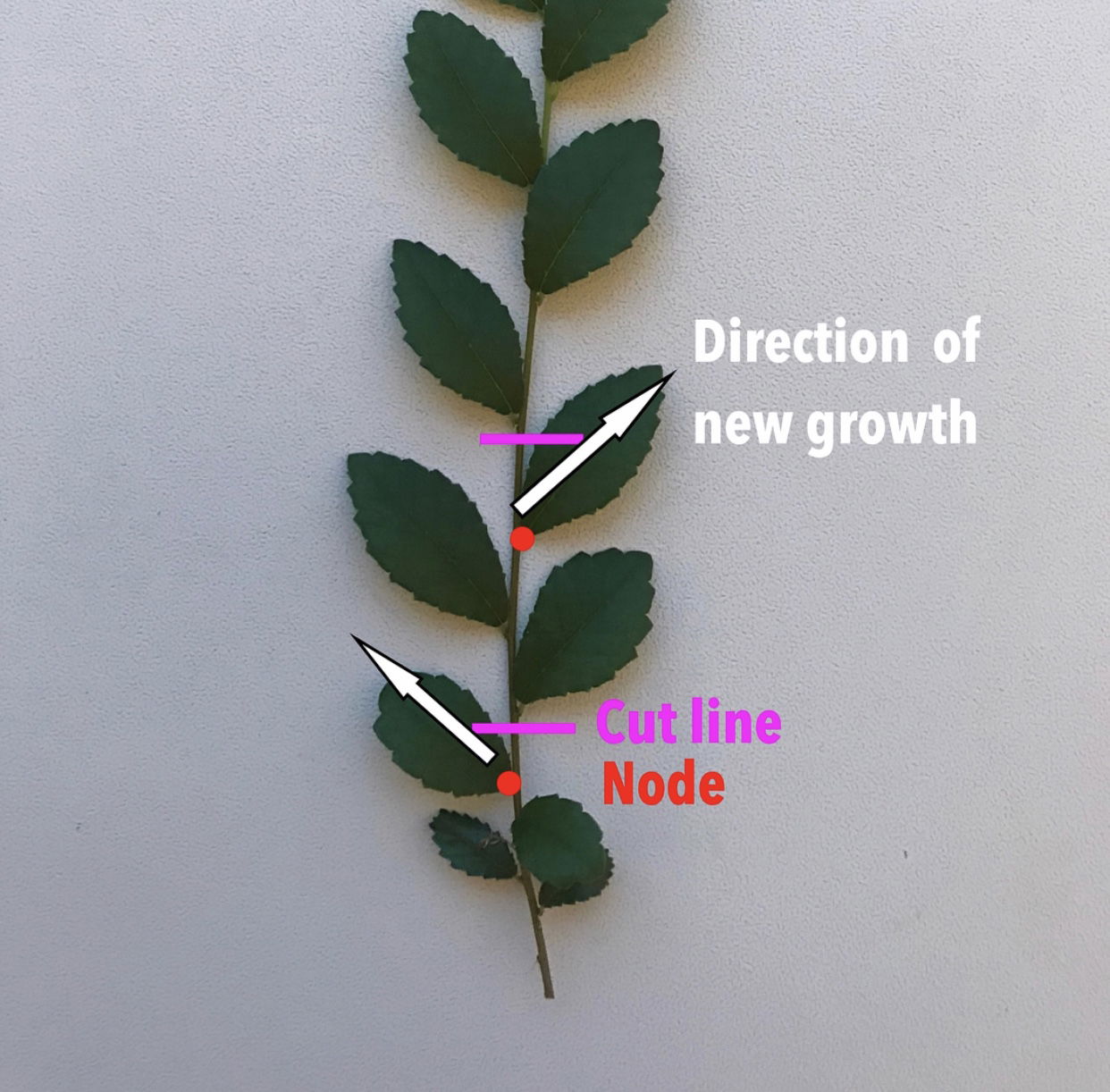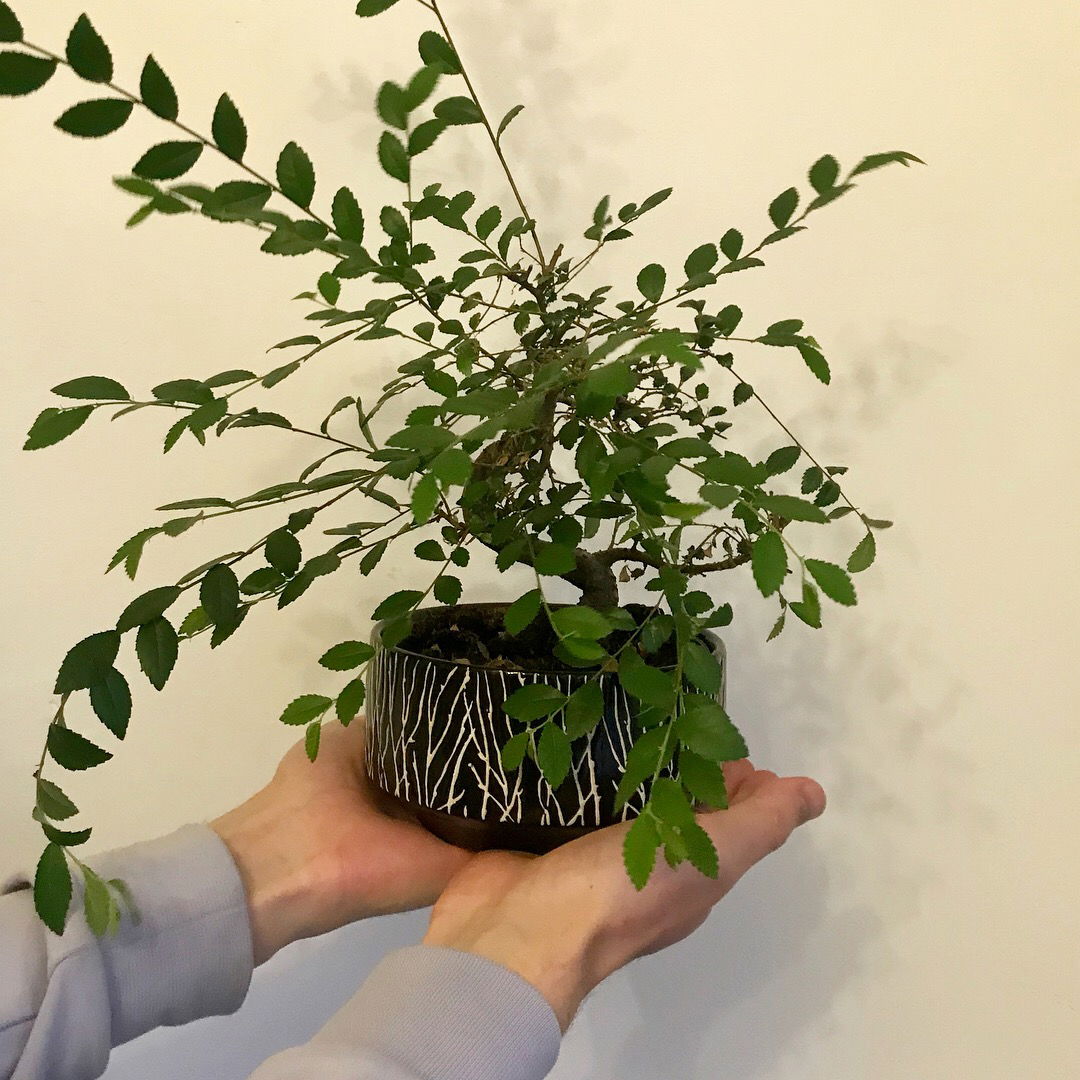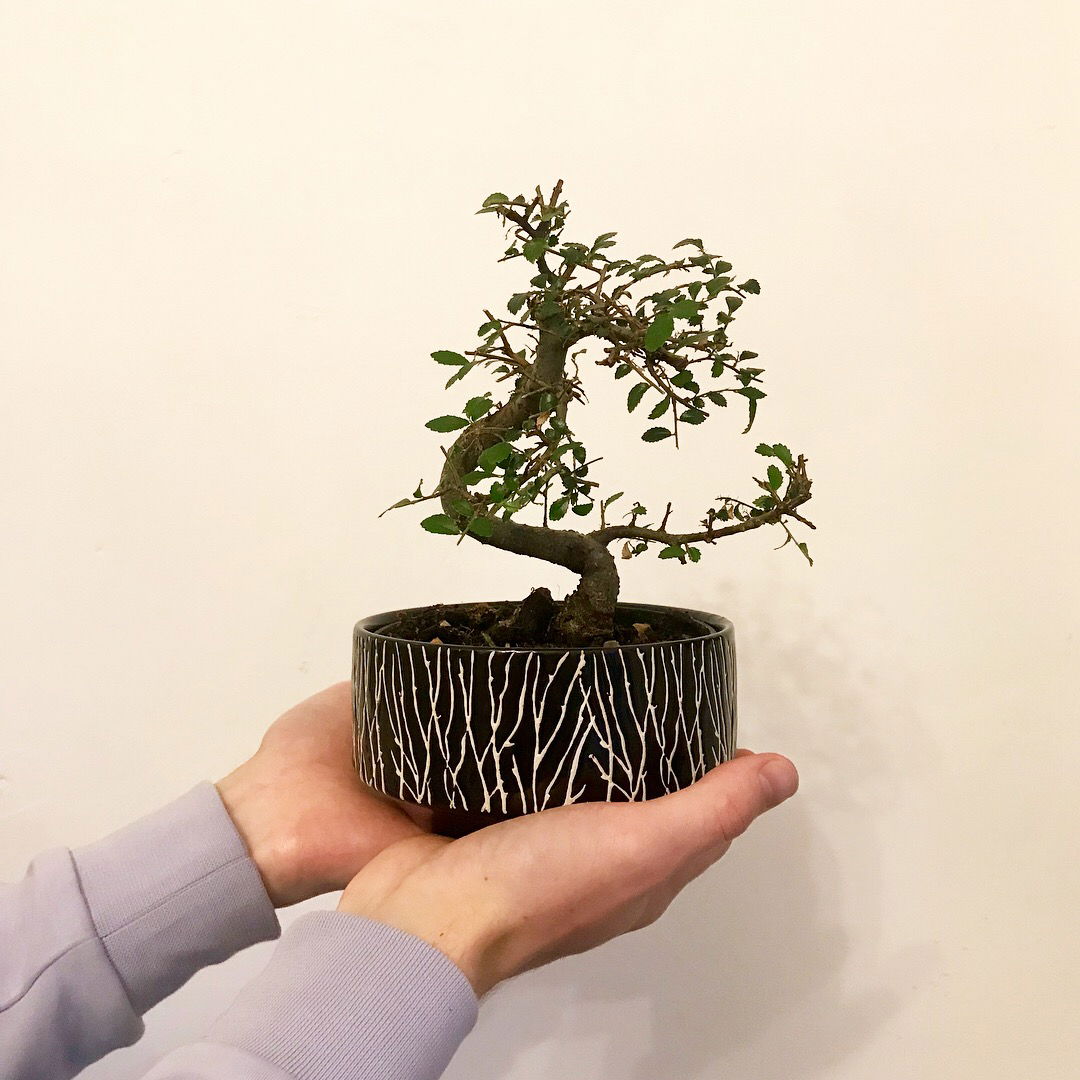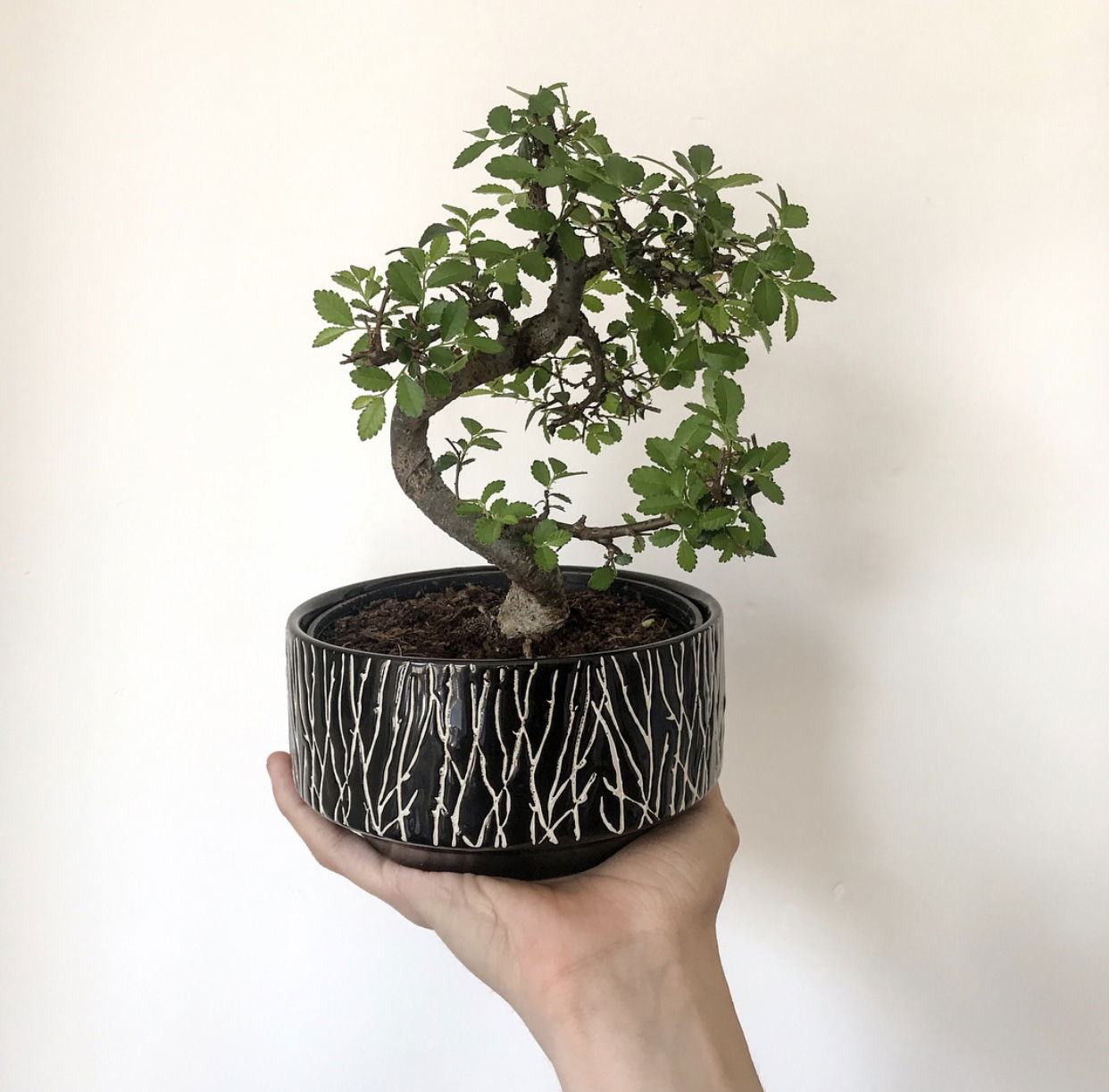
Ulmus parvifolia - Chinese Elm
1. Choosing the Tree
If the tree's canopy is utterly dead on one side, avoid at all costs! Purchase a specimen that has green foliar buds emerging from its nodes, along with at least a few healthy leaves. Check to see if the lateral stems are non-crispy, and if they bend with a green cambium, the plant is still alive.
2. Temporary Care
For those with dehydration issues, give the plant a good soak of lukewarm water, resisting the temptation to use a fertiliser. After two weeks of good cultivation, you can safely use a Bonsai (or 'Houseplant') labelled feed as the risk of further root stress is minimal.
Alternatively, an over-watered specimen must be taken out from the pot for soil aeration, while resting on dry tissue. Further advice on root rot can be found on this link.
 This method will only work for alternate growth. If the leaves grow symmetrically along a stem, prune it close to the tree's original shape.
This method will only work for alternate growth. If the leaves grow symmetrically along a stem, prune it close to the tree's original shape.
3. Pruning
Remove dead branches and trim the tree into the general shape of how it used to resemble. Be slightly brutal, as new leaves will come back and make the tree look much bushier, but always leave a few green nodal buds to remain. The last image will show you where to cut the stem, as you can direct the new growth in a certain direction.

Before

During

After
4. Location, Location, Location
As dehydrated roots will already be stressed, we'd avoid repotting it for the foreseeable future. Allow the plant's lower portion to regain strength by leaving it alone. Situate the specimen in a bright, indirect location with temperatures above 18℃ (64℉). Allow the compost's surface to become dry in between hydrations, feeling the pot's weight for further confirmation. The final step to follow is introducing a pebble tray; not only will this provide a Bonsai-friendly environment, but it'll also prolong the soil moisture due to the atmospheric saturation.
This is it! We hope that this article will help you navigate the vital steps fro rejuvenating a weakened Bonsai. If you'd like further assistance or advice with your own specimen, be sure to comment in the section below. Alternatively, click here to learn more about our top tips for healthy, normal Bonsai!